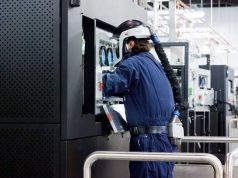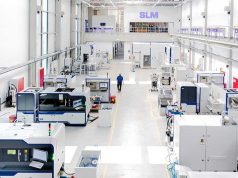Reportlinker.com announces the release of the report “3D Bioprinting Global Market Report 2022”. The global 3d bioprinting market is expected to grow from $1.08 billion in 2021 to $1.31 billion in 2022 at a compound annual growth rate (CAGR) of 21.7%. The market is expected to grow to $2.51 billion in 2026 at a compound annual growth rate (CAGR) of 17.7%.
The 3D bioprinting market consists of sales of 3D bioprinting products by entities (organizations, sole traders, and partnerships) that are engaged in manufacturing and utilizing 3D printing to produce biomedical parts that imitate natural tissue characteristics. 3D Bioprinting is a type of additive manufacturing that prints live structures layer by layer, mimicking the behavior of actual living systems, using cells and other biocompatible materials like inks, also known as bio-inks. 3D bioprinting materials are mainly used in connection with drug research and most recently as cell scaffolds to help repair damaged ligaments and joints.
The main types of components in 3D bioprinting are 3D bioprinters and bio-inks. 3D bioprinters use three-dimensional technology in combination with biocompatible materials to replicate body parts. It is used for bioprinting of tissue, bone, organs, blood vessels tissue, and biomedical parts. The different types of materials include living cells, hydrogels, extracellular matrices, and others. 3D bioprinting is used in research applications, clinical applications, others and implemented in several verticals such as research organizations and academic institutes, biopharmaceuticals companies, hospitals, others.
Rising governments and private funding to support 3D bioprinting research activities are expected to drive the growth of the 3D bioprinting market in the forecast period. 3D bioprinting is increasing applications in healthcare, attracted funding from government and private organizations. This funding provides financial and technical assistance across different development phases of 3D bioprinting techniques.
For instance, in May 2021, Readily3d SA, a Switzerland-based bioprinting company, received funding of $600,000 from the European Union to develop a living miniature model of the pancreas using its Tomolite 3D bioprinting technique. The Australian Minister for Health-funded Curtin University $737,690 in June 2020 to develop and optimize 3D technology for bioprinting skin tissue directly onto model wounds as a prelude to human skin restoration.
Furthermore, in January 2020, Aspect Biosystems, a Canada-based 3D bioprinting technology company received a $20 million funding in Series A financing round to advance its technology for 3D bioprinting human tissue which was led by venture capital firm Radical Ventures, Pangaea Ventures, Pallasite Ventures, and Rhino Ventures. Thus, increasing the availability of funding will boost the 3D bioprinting market.
Artificial intelligence (AI) is increasingly being used in 3D bioprinting to fabricate bio-tissues in a layer-to-layer fashion from a digital 3D model using a combination of cells, growth factors, and biomaterials. Artificial intelligence is a branch of technology that deals with the simulation of human behavior in machines.
AI is used in bioprinting to give suggestions on the best possible printing parameters needed to produce a biocompatible tissue that can fit the patient’s physiological makeup, by analyzing data and identifying patterns throughout the bioprinting process. For instance, in June 2021, researchers at Queensland University of Technology’s (QUT) Center in Transformative Biomimetics in Bioengineering, and Oregon University, integrated AI and machine vision into 3D printers to manufacture customized medical implants.
In addition to this, in September 2020, Researchers at Rice University used AI to speed up the development of 3D printed bioscaffolds that help injuries heal.
In May 2021, 3D Systems, a US-based company engaged in offering 3D bioprinting technology announced the acquisition of Allevi Inc. for an undisclosed amount. Through this acquisition, 3D Systems plans to utilize Allevi’s expertise to develop applications in the future for the development of human organs in the long term and become a market leader in bioprinting. Allevi Inc. is a US-based company that manufactures 3D bioprinters and bio-inks which are used by researchers.
The regions covered in this report are Asia-Pacific, Western Europe, Eastern Europe, North America, South America, the Middle East, and Africa.
The countries covered in the 3d bioprinting market are Australia, Brazil, China, France, Germany, India, Indonesia, Japan, Russia, South Korea, the UK, and the USA.
Read the full report here.
Subscribe to our Newsletter
3DPResso is a weekly newsletter that links to the most exciting global stories from the 3D printing and additive manufacturing industry.




























